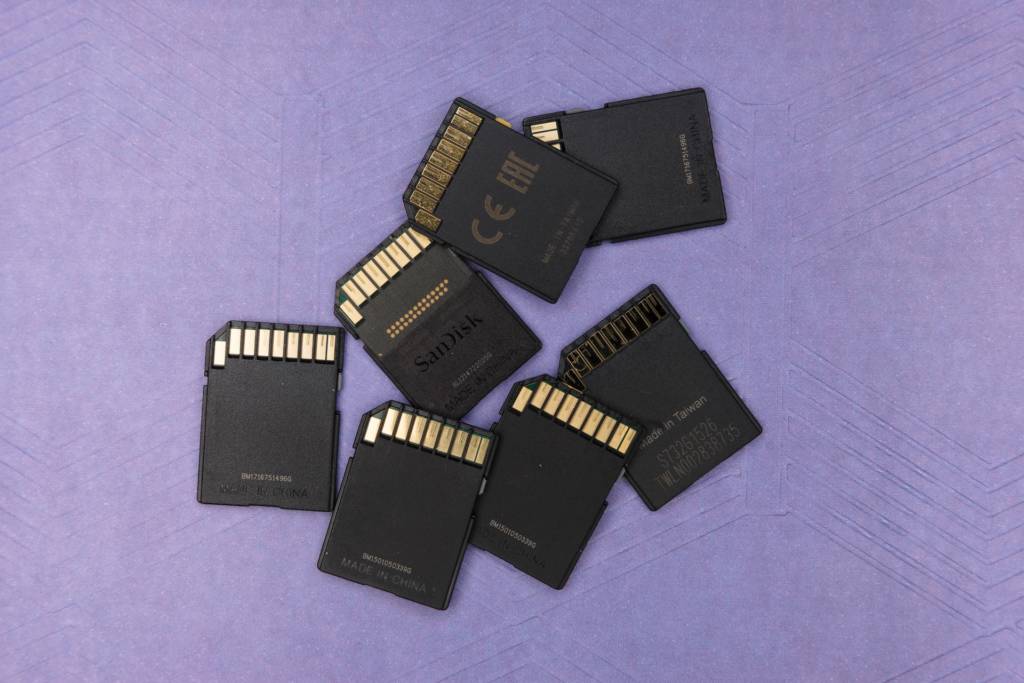M&A success depends on efficient execution and strong security. This is especially true in India, where mergers and acquisitions (M&A) activity is climbing fast amid a broader shift to digital dealmaking.
Case in point
In 2024, India had a spectacular 33% growth in transaction volumes, reaching 2,186 agreements valued at USD 116 billion. This represents a tremendous 76% increase in deal values when compared to the previous year.
Because of this rapid development, driven by digital transformation and strategic consolidation, there is an urgent need for deal execution tools that are both secure and efficient, such as virtual data rooms.
Our in-depth M&A data room analysis explains how VDRs support the deal process, highlighting their importance in modern dealmaking and key considerations for selecting the right solution for your needs.

Why M&A Demands Specialized Data Room Solutions
Due diligence in M&A is a controlled disclosure process, not a simple file drop. Sensitive financial, legal, and IP materials move between many parties, raising real risks of leakage and overexposure. In this environment, virtual data rooms have shifted from convenient tools to essential infrastructure for M&A execution.
Sensitive data protection
Mergers and acquisitions always involve sharing large amounts of highly confidential information. This might include everything from financial records and legal papers to intellectual property and human resources data.
When it comes to meeting the demanding requirements of M&A due diligence, generic file sharing tools (e.g., consumer cloud storage) are simply insufficient. Furthermore, these solutions don’t provide the granular role-based permissions, SSO/MFA, audit logs, and a structured Q&A workflow needed for high-stakes transactions.
Secure collaboration and communication
Because M&A deals involve large volumes of sensitive documents and multiple stakeholders, it’s important to use a solution designed specifically for secure and controlled access for both internal and external parties. This includes potential buyers, sellers, potential investors, investment bankers, legal experts, financial institutions, consultants, and internal teams.
VDRs may be used to share documents, like high-level teaser papers and confidential information memoranda (CIMs), with interested parties under strong non-disclosure agreements (NDAs) even before a formal due diligence process starts. This would be referred to as the first document review.
Why M&A data rooms are the solution
Virtual data rooms address all these needs by acting as a secure, centralized hub for deal documentation and communication with audit trails and a built-in Q&A. In M&A, virtual data rooms serve both sides — buyers for reviewing target documents with controlled, searchable access and sellers for organizing and sharing materials with potential acquirers with staged disclosure.
What an M&A Data Room Can Offer
A specialized M&A virtual data room offers a range of advantages that speed up the process of signing a transaction and reduce the associated risks:
- Accelerated due diligence phase timelines. Virtual data rooms significantly reduce the amount of time spent on document exchange and review, which in turn shortens the total due diligence period. This is accomplished by providing quick and secure access to required documents for all involved parties.
- Easy access to legal, financial, and intellectual property documents. All essential information has been consolidated into a single, well-organized platform, regardless of the kind of information it is. This guarantees that all individuals are working with the most recent versions of documents and removes the need for several file systems to be used across the organization.
- Controlled access by function or party. VDRs enable administrators to specify very detailed permissions, ensuring that each person or group only sees the information that is pertinent to their function. Only permitted stakeholders may access the documents at any time. This safeguards private data from being seen by unauthorized parties.
- Question-and-answer workflows. Integrated question-and-answer modules improve communication between parties, enabling buyers to submit queries directly inside the platform and sellers to offer replies that are organized and trackable.
- Audit trails and real-time updates for ensuring transparency. Any modifications made to certain documents, new uploads, and user activity are recorded in real time. This exhaustive audit trail offers total transparency and accountability throughout the whole transaction, which may prove to be very beneficial in the event of any disputes or inquiries from regulatory authorities.
M&A Process Stages Where VDRs Add Value
Virtual data rooms are effective throughout the whole of the M&A deal lifecycle, since they can accommodate the ever-changing requirements of each deal stage.
Legal and financial due diligence
This is the main application of VDRs, in which purchasers and their advisers carefully evaluate a target company’s legal proceedings, legal contracts, financial statements, tax records, operational data, and other relevant information. The best virtual data rooms offer safe and effective access to these enormous resources. Read more here on our due diligence data room page.
Internal approval workflows
VDRs may enable internal reviews and approvals, enabling multiple departments within the purchasing or selling organization to examine and comment on confidential documents before key decisions are made. VDRs can also support external stakeholders when appropriate.
Final contract negotiation
Virtual data rooms can store drafts of final agreements, which enable secure version control and collaborative review among legal teams and law firms. This ensures that all interested parties are working on the most recent version of the contract.
Post-merger integration
Even after the transaction is finalized, value may still be derived from VDRs. After a merger, they ensure the safe transfer of essential operational papers, intellectual property, and historical data to the purchasing firm and act as a centralized, secure hub for compliance and archiving.
Must-Have Features for an M&A Virtual Data Room in 2025
Here is a list of eight essential capabilities to check for the following key features:
 Granular permissions and user roles Granular permissions and user roles | The capability to grant certain access permissions to individuals or groups for every document and folder, so regulating who can view, download, print, modify the contents of a folder or document. |
 Advanced document indexing and smart search Advanced document indexing and smart search | This feature enables authorized users to rapidly locate sensitive information within enormous datasets by combining advanced search capabilities (including full-text search and optical character recognition for scanned documents) with automated indexing of documents upon upload. |
 Question-and-answer pages for investor concerns Question-and-answer pages for investor concerns | A clear monitoring and notification system, as well as a portion that is specifically designated for structured question-and-answer exchanges, enables buyers to make inquiries and sellers to respond to those enquiries. |
To ensure compliance and accountability, audit trails and download logs provide:
| |
 Secure watermarking and expiry controls Secure watermarking and expiry controls | The option to set expiry dates for document access, as well as the ability to include dynamic watermarks (such as showing the viewer’s identity and IP address) on essential documents that have been downloaded or viewed, to discourage document sharing without authorization. |
 Bulk upload and auto-folder structure Bulk upload and auto-folder structure | Seamless collaboration tools are effective for uploading huge quantities of documents, particularly with capabilities that can automatically organize and classify files into a predetermined folder structure, therefore saving a substantial amount of time during the setup process. |
 Secure and fully functioning mobile apps (iOS and Android) Secure and fully functioning mobile apps (iOS and Android) | Enable deal participants to examine and exchange documents and engage in processes from any location and at any time. These applications are referred to as “mobile access for on-the-go reviews.” |
 Tools for artificial intelligence-based redaction and translation Tools for artificial intelligence-based redaction and translation | VDRs are increasingly combining artificial intelligence for the automatic redaction of sensitive material (such as personally identifiable information) and the translation of sensitive documents on the fly, which further improves efficiency and reduces the amount of human labor required. |
How to Pick a Data Room Provider for India-Based M&A Deals
When selecting a VDR provider, consider the following:
- First, the VDR provider operating in India must ensure data sovereignty, compliance with local requirements, and higher access speeds.
- Next, pick a VDR provider with a sound reputation. In particular, choose a supplier that is well-known for its experience in mergers and acquisitions (M&A) and robust security standards. Additionally, consider companies that have a local presence or data hosting options in India.
- Likewise, to support M&A dealmakers who review documents on the go, choose among VDR providers that offer powerful mobile apps that are both user-friendly and secure.
- Regarding pricing, there are three common pricing models: flat-rate, user-based, and per-page. In many cases, flat-rate plans may be the best option since they often include unlimited users and data for a fixed period, making costs more predictable for long or large-scale transactions.
- By contrast, user-based pricing charges per user, while per-page pricing can become unpredictable and expensive for high-volume deals. Finally, ensure pricing is transparent and that there are no hidden fees.
- Support is critical. Look for onboarding help, 24/7 technical assistance (including live chat), and a dedicated success manager. M&A deals run under tight timelines; thus, issues can arise at any time. Luckily, strong support helps with troubleshooting and optimizing the use of the M&A virtual data room.
- Lastly, implementation speed matters. Therefore, prioritize providers that offer fast onboarding and intuitive user interfaces.
See our recommended M&A data room providers, including vendors that support compliance with Indian regulations.
The best security level
How to Set Up a Virtual Data Room for M&A
- Make sure that you have key folders and checklists for due diligence. Establishing a logical folder structure that is similar to a standard due diligence checklist (for example, financial, legal, HR, IP, and commercial) should be done before uploading. The reviewers will have an easier time navigating the site thanks to this organization.
- Delegate responsibilities and permissions. It is important to carefully establish user roles (for example, “Buyer Analyst,” “Legal Advisor,” and “Seller Admin”) and then provide granular access controls to particular folders and documents for each of these distinct roles. Make certain to restrict access to information that they should not have.
- Upload and categorize documents. Start uploading documents into the folder structure that has been pre-defined. To speed up this procedure, you can make use of the bulk upload options and the automated indexing. Make sure that all of the papers have precise names and are in a suitable format (PDFs are often the preferred format).
- The audit logs and notifications should be activated. To keep track of every activity that takes place inside the virtual data room m&a, enable complete audit logging. To ensure that all relevant parties are kept up to date, you should configure alerts for new document uploads, question-and-answer activities, or particular user activities.
- Use question-and-answer to manage enquiries. Encourage purchasers to submit all of their enquiries using the question-and-answer section of the VDR. It is the responsibility of the seller to designate certain personnel who will be accountable for providing fast and correct responses to these enquiries.
- The VDR should be archived after the transaction: Verify that the VDR can be preserved safely after the transaction has been completed. For the sake of record-keeping and compliance, reputable suppliers download a comprehensive and indexed copy of the virtual data room m&a. This copy provides access to all documents and audit trails.
FAQs
What types of documents go into an M&A VDR?
In most cases, a virtual data room for mergers and acquisitions stores a broad assortment of documents essential for due diligence: financial statements (both audited and unaudited), tax returns, legal contracts (customer, vendor, employment, leases), intellectual property registrations, corporate governance documents (articles of association and board minutes), organizational charts, employee records, marketing materials, environmental reports, and any other information that is pertinent to evaluating the value and risks of the target company.
Can buyers and sellers collaborate inside the same VDR?
VDRs are designed to facilitate secure collaboration between different parties. Even though buyers and sellers have access to the same data room, their rights and permissions are strictly managed.
The question-and-answer module makes it easier to have organized communication by enabling buyers to ask questions and sellers to respond to those inquiries. This eliminates the need for direct, unstructured engagement, which might result in misunderstandings or sensitive data breaches.
Is my data legally protected in a VDR under Indian law?
Reputable VDR providers offer advanced security and comply with global and local privacy regulations; many hold ISO 27001 certification. Although VDRs are secure, legal protection ultimately depends on your contracts, the governing law, and any NDAs. Choose providers with solid security, audit trails, and explicit terms, and consult legal counsel on protecting large data volumes under Indian legislation.
How much does an M&A data room typically cost in India?
M&A data room pricing in India varies by provider, inclusions, deal length, and model. Common models are per-page (costly at volume), per-user, and flat monthly, with the latter offering more predictable costs. Flat monthly plans with unlimited users and set storage typically run $400–$1,000 per month; annual or enterprise contracts for large, complex deals range from several thousand to tens of thousands.


